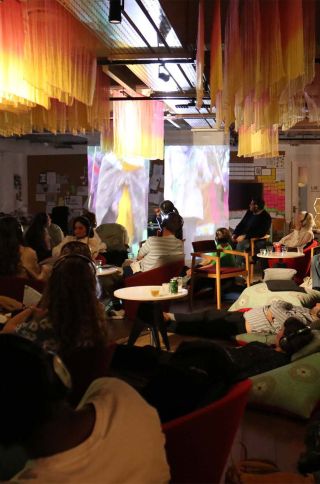Trauma
Eco-Trauma and Eco-Hope in Kenya
The indigenous Ogiek people aim to keep their traditions with the Mau Forest.
Posted February 16, 2023 Reviewed by Michelle Quirk
Key points
- The Ogiek people in Kenya thrive in melding their forest-based culture and ecosystem.
- Deliberate, decades-long land and livelihood destruction by Kenyan governments has induced eco-trauma and solastalgia (mental distress).
- After a 13-year legal battle, the Ogiek won rights and reparations from the Government of Kenya and now await full implementation.
Traveling across Kenya from Nairobi to Lake Victoria takes you around the high-elevation Mau Forest complex in the Rift Valley. The allure may appear in its apparent lushness or inhospitality—or both. Flashing by the 50 shades of green masks the forest as a site of horrendous solastalgia, meaning trauma and mental distress from environmental degradation.
The Ogiek People
The forest’s indigenous hunter–gatherers, the Ogiek, who number around 20,000, of whom about three-quarters live in Mau, are simply trying to maintain their heritage. They have been forced to battle impinging outside interests seeking swift exploitation, mainly through logging and farming. Their story is told in a podcast in English and Ogiek, produced by Invisible Flock (an arts studio in the United Kingdom), the Ogiek Peoples’ Development Program, and Land Body Ecologies (an art–science collective in which I am involved) as part of a two-year residency at London’s Wellcome Hub.

Land Body Ecologies documents and analyzes the mental and emotional health impacts of forced environmental change by collaborating with local organisations and communities around the world. Solastalgia characterizes the daily life of many peoples trying to live with their land, but they are never passive victims. They are further characterized by the drive to act for themselves and the planet.
As Daniel Kobei, the Founder and Executive Director of the Ogiek Peoples’ Development Program, explains in the podcast, “Everybody wants to go to Mau. And everybody wants to have a piece of Mau.” In 2009, the Government of Kenya continued U.K. colonialist land grabs by the Kenya Forest Service giving the Ogiek 30 days’ notice to leave their forest. The reason given for this eviction was protection of freshwater supplies, but it was seemingly more for logging and growing maize and potatoes. For the Ogiek, the forest is the people and the people are the forest, so they pursue a multi-pronged strategy to support and thrive for themselves.
They continue their traditional living with the forest for food, medicine, materials, spirituality, and connection to their past and future. One staple is honey, with the Ogiek making hives to let the bees flit around the blossoms. It grounds their culture, knowledge, and beliefs. As Kobei explains, “We look at bees as a part and parcel of us.”
A Bittersweet Legal Victory
Soon after the eviction notice, the Ogiek sent their concerns about the Government of Kenya to the African Commission on Human and Peoples’ Rights. In 2012, the case was referred to the African Court on Human and Peoples’ Rights, which ruled in 2017 that the Ogiek own the land. Five years later, in June 2022, the Ogiek were awarded more than $1.3 million in reparations. The Government of Kenya was ordered to recognise the Ogiek as indigenous, organise consultations to return seized and leased land to the Ogiek, and create a fund to support the Ogiek culture and livelihoods.
A victory in the making over 13 years—with all the time, stress, and costs—is bittersweet, especially accompanied by the sourness of no guarantee of full, prompt, and fair implementation. The Ogiek whose properties have been flattened, who have been fenced off from their homes, and who have been pressured to “assimilate” with others suffer psychological and physical health impacts. Despite Kobei’s “happiness for my own living ways,” they have now traversed three generations of loss, accepting as Kobei explains that “We are not fighting for ourselves. We are fighting for the generation to come.”
Melding Ecosystem and Culture
To retain their heritage, the present-day Ogiek children need to become adults within and as part of the forest. They must know it, and it must know them, physically, mentally, emotionally, and spiritually. A unified history melds ecosystem and culture. Kobei describes, “When you don’t have a story, then you are living a life whereby you are not having memories of your past.”
It is not only human beings relating this tale. The land, air, water, and living systems communicate, too. This ethos threads throughout the project’s name of “Land Body Ecologies,” as combined in the podcast.
Balancing the spoken words of the Ogiek, another podcast track spurs nonhuman elements to narrate their experiences. Buzzing bees, whistling wind, critters enjoying their daily tasks, and human chants compose this song. The story of solastalgia and overcoming it goes beyond people expressing their personal grief, interlacing with an ecosystem’s hopes and worries for itself and the Earth.
References
Ahmad, A., V. Pratt, and S. Gougsa. 2022. “Where is the land and indigenous knowledge in understanding land trauma and land based violence in climate change?” BMJ, vol. 379, article o2790.
Redvers, N., Y. Celidwen, C. Schultz, O. Horn, C. Githaiga, M. Vera, M. Perdrisat, L.M. Plume, D. Kobei, M.C. Kain, A. Poelina, J.N. Rojas, and B. Blondin. 2022. “The determinants of planetary health: an Indigenous consensus perspective.” The Lancet Planetary Health, vol. 6, no. 2, pp. e156–e163.
Redvers, N., A. Poelina, C. Schultz, D. Kobei, C. Githaiga, M. Perdrisat, D. Prince, and B. Blondin. 2020. “Indigenous Natural and First Law in Planetary Health.” Challenges, vol. 11, no. 2, article 29.
Vizina, Y. and D. Kobei. 2017. “Indigenous peoples and sustainable wildlife management in the global era.” Unasylva, vol. 68, no. 249, pp. 27–32.


